#yellow legged mud dauber
Text
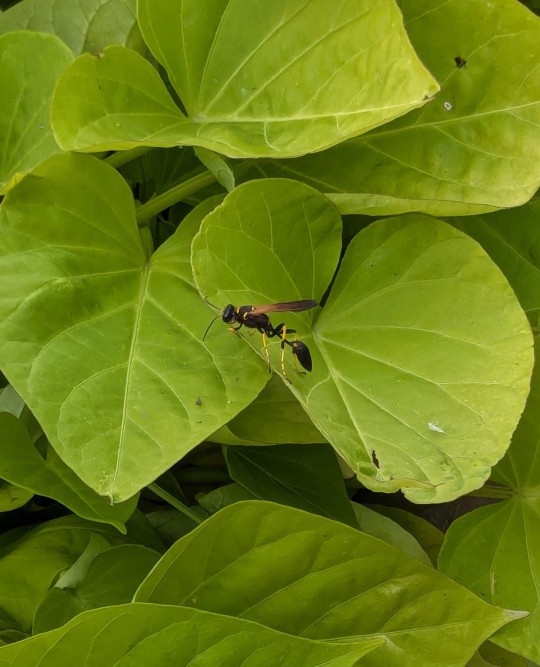
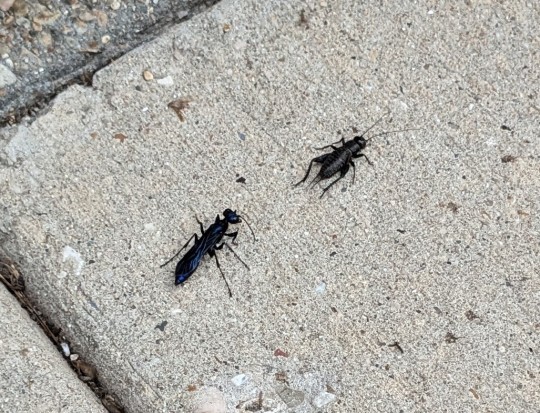
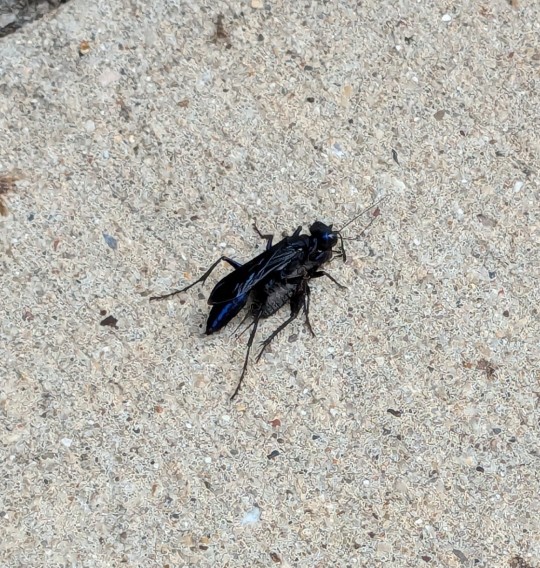
@illogicalghost submitted: hi! i have 3 bugs to share ^_^ first is a wasp(?) that looks really cool. i think the one on the left in the second photo might also be a wasp? it flew up to this cricket on the right and landed on top of it, and they walked around together. not sure if it was trying to eat the cricket or what. it was like an inch long and shiny black, very pretty. they were found in southern wisconsin. 🐝🦗
Hello! They are both definitely wasps yes. The first is a yellow-legged mud-dauber and the second is likely a steel-blue cricket-hunter given its prey there! Great black digger wasps will also prey on crickets (and other Orthopterans) but their bodies are not as blue as this one is. Anyhoo she's gonna bring that cricket to her nest for her babies to nibble :)
#animals#insects#bugs#submission#wasp#yellow legged mud dauber#steel blue cricket hunter#cricket#bug death#predation
88 notes
·
View notes
Text

Snack
1 note
·
View note
Text

Wasp sploot
Yellow-Legged Mud-dauber Wasp (Sceliphron caementarium)
August 20, 2024
John Heinz National Wildlife Refuge, Tinicum, Pennsylvania
#bug#bugs#photographers on tumblr#Sceliphron caementarium#Yellow-Legged Mud-dauber Wasp#wasp#wasps#bugblr#entomology#insects#insect#nature#animals#wildlife photography
140 notes
·
View notes
Text

Yellow-legged Mud-dauber Wasp
Instinctively this wasp is equipped with the knowledge concerning the right kind of mud to use for its nest, as well as how to gather and transport it, as seen here. If not for instinct each new wasp would have to figure out how to do these tasks.
11 notes
·
View notes
Text
Wasp (and bee and sawfly) holding year in review


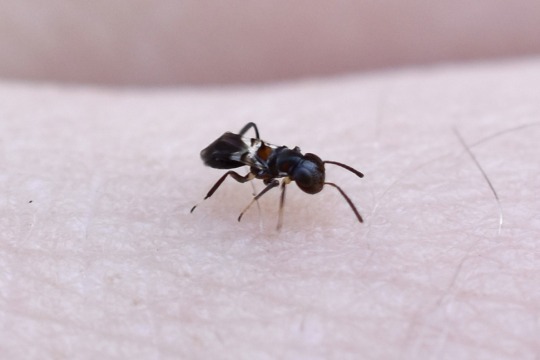
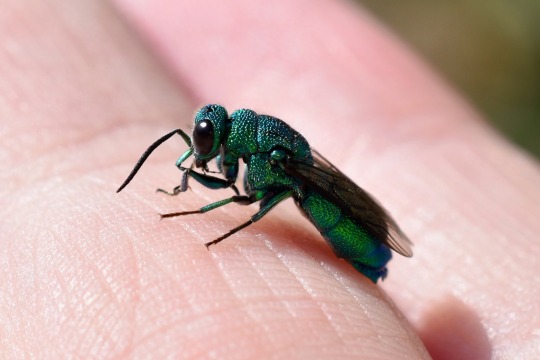


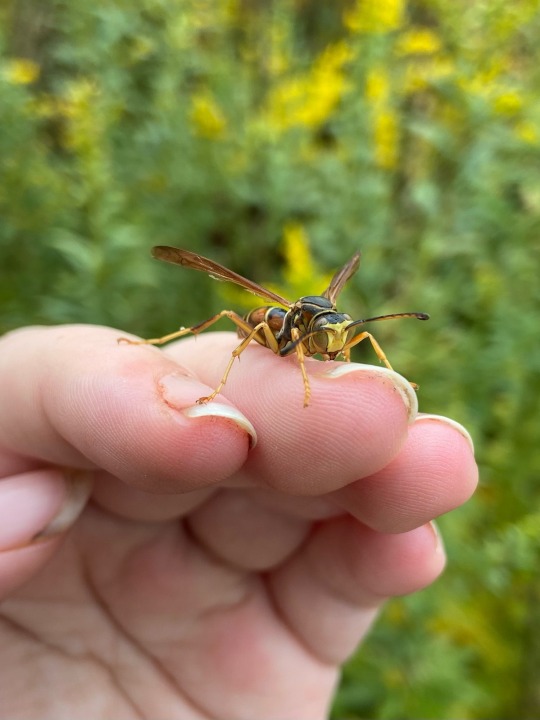
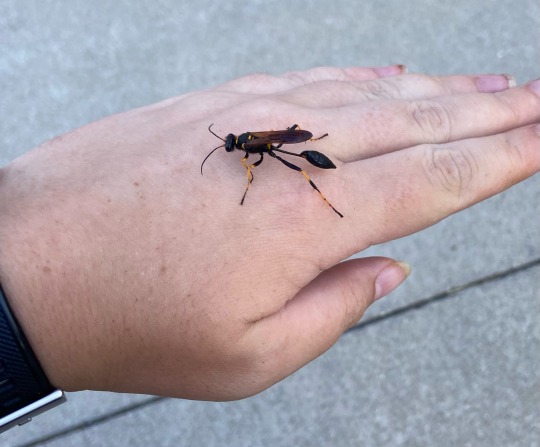
From left to right and top to bottom, these are: gall wasp (maybe genus Zopheroteras), sawfly (Dolerus sp.), parasitoid wasp (Encyrtus sp.), cuckoo wasp (Chrysis sp.), unidentified parasitoid wasp, calliopsis cuckoo nomad bee (Holcopasites calliopsidis), male northern paper wasp (Polistes fuscatus), yellow-legged mud-dauber (Sceliphron caementarium)

And my favorite find of the year: a Greene’s giant ichneumonid (Megarhyssa greenei)
All individuals shown here either cannot sting or have very mild stings
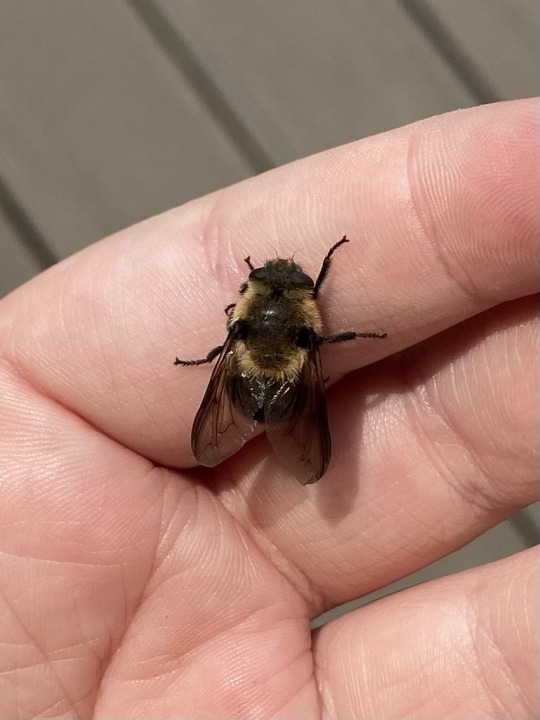
Bonus: a convincing bumblebee mimic, the deer bot fly (Cephenemyia sp.)
123 notes
·
View notes
Text



Foeniculum vulgare (fennel) and Sceliphron caementarium (yellow-legged mud-dauber wasp)
Fennel was originally a Mediterranean plant but it has now become 'naturalized' in many parts of world and is a common sight in the suburb of Vancouver where I live. In its native habitat, it favors locations with dry soil, near the sea-coast or on a sunny riverbank.
Fennel is a hardy, perennial herb used in the cuisines of many countries and is grown in positively industrial quantities. India alone produces over 600,000 metric tones of fennel a year. Alexander the Great may have introduced this plant to India in 325 BC.
As for the yellow-legged mud-dauber wasp, it's native to North and Central America but has now become 'naturalized' throughout the world, including the Mediterranean basin. Theoretically, I could have taken these photos in fennel's home environment on one of the Greek islands. Welcome to globalization.
#flowers#photographers on tumblr#fennel#wasp#yellow#fleurs#flores#fiori#blumen#bloemen#White Rock BC#vancouver
111 notes
·
View notes
Text
Sceliphron caementarium, Yellow-legged Mud Dauber Wasp, building her nest
#nature#photography#science#animals#arthropods#bugblr#invertebrates#macro photography#insecta#wasps#mud dauber wasps#video#nest#pottery
15 notes
·
View notes
Text
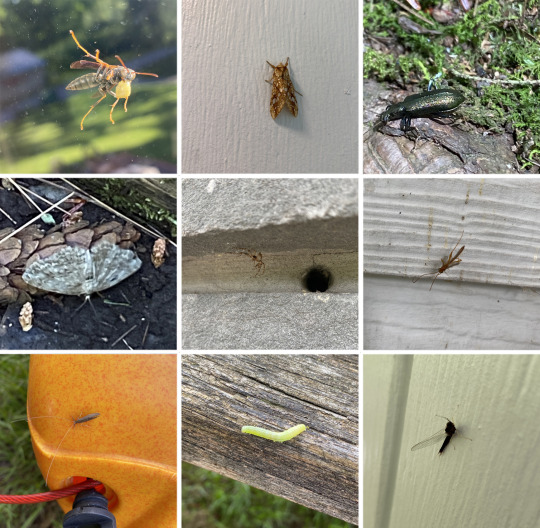
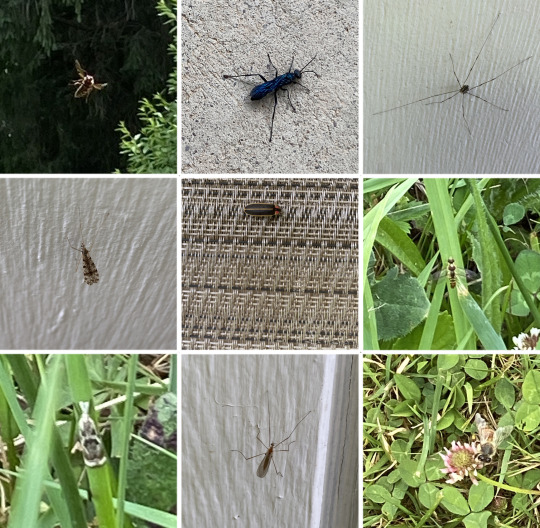
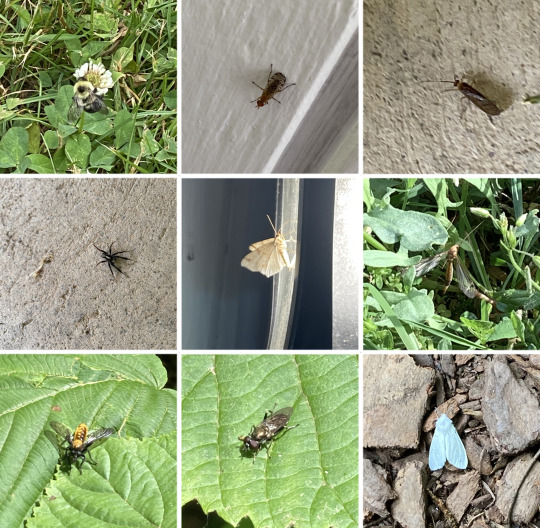
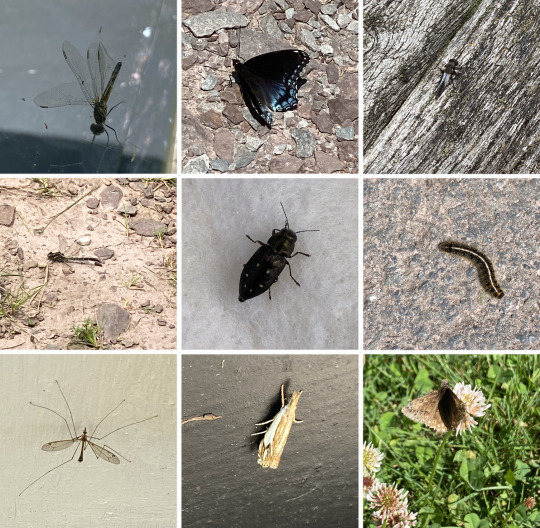
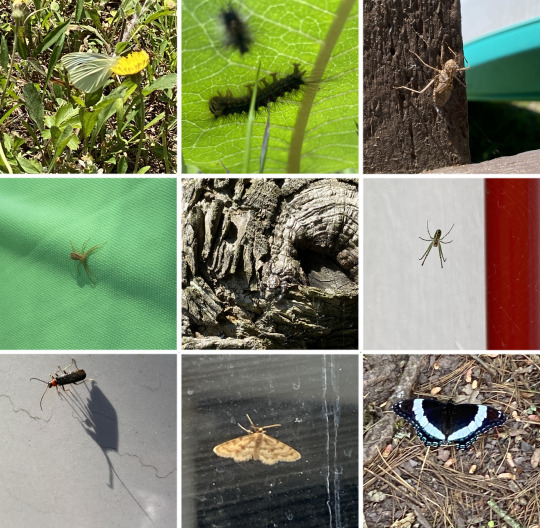
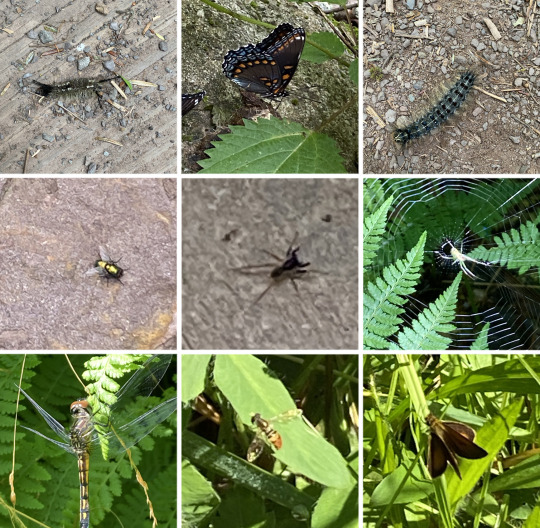
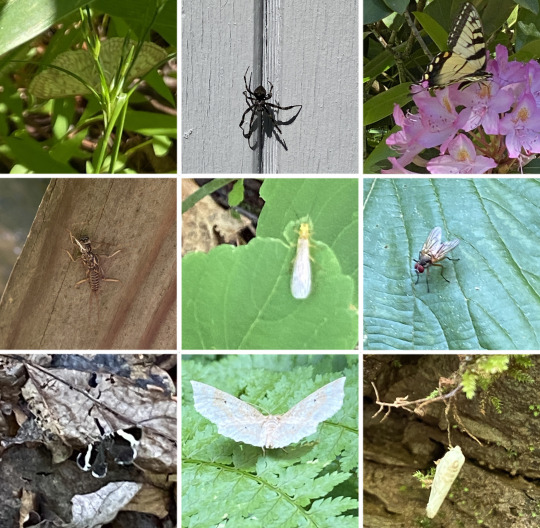
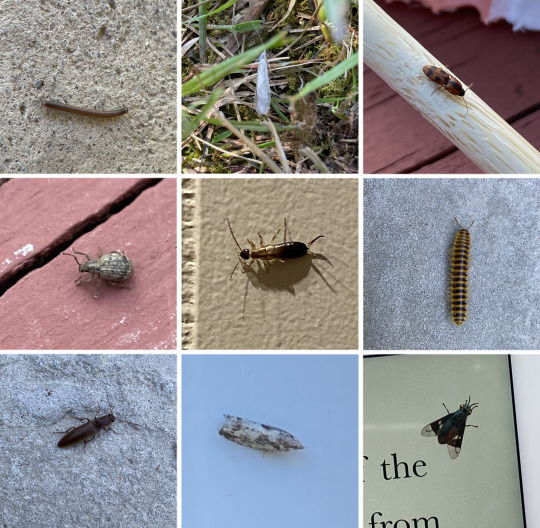
Zuzu's bug-ventures June 8-16, 2024 (insects/spiders from a state park in northeast Pennsylvania) (re-uploading because of file size issues)
I figured I would make a collage after getting so many! A couple of the above photos have duplicates, so all in all I believe I found 65 distinct kinds. I'm still working to ID some of them, but all the ones I think I have ID'd are under the cut. Anyway, it was truly a fun experience. Maybe next time I'll have a camera that isn't a shitty phone!
You can see full size photos of most of these here.
IDs under the cut
Just a note, I'm not 100% on any of these. My IDs are speculative based on google searches, reddit, and so-on. If you think something is wrong, PLEASE let me know!
Also, each image has 9 insects/spiders in a grid. I will be referring to each grid of 9 insects/spiders as a single image below, and identifying all 9 based on rows within the image. If that makes sense. Hopefully it does!
Image 1 (first row left):
Top row (from left to right): Northern paper wasp (I'm told it's carrying caterpillar meat); Hickory tussock moth; Ground beetle of some kind (could not ID)
Middle row: Fall cankerworm moth; Barn spider; Red ichneumon wasp
Bottom row: Long-horned caddisfly; Copper underwing caterpillar; Brush-legged mayfly
Image 2 (first row right):
Top row: Very loud very big bee (could not ID); Common blue mud dauber wasp; Harvestman spider
Middle row: Limoniid crane fly; Firefly; Hoverfly
Bottom row: Elegant grass-veneer moth; Tiger crane fly; Western honey bee
Image 3 (second row left):
Top row: Two-spotted bumble bee; Marsh fly; Yellow-collared scape moth? (could not ID)
Middle row: Wolf spider (male); Macaria moth; Tipula lunata (type of crane fly)
Bottom row: Robber fly; Brown-toed forest fly; Virginian tiger moth
Image 4 (second row right):
Top row: Blue dasher dragonfly? (could not ID. Dead in spider web); White admiral butterfly; Chalk-fronted corporal dragonfly
Middle row: Clubtail dragonfly? (could not ID); Hemlock borer beetle; Eastern tent caterpillar
Bottom row: Another Tipula lanata crane fly; Double-banded grass-veneer moth; Horace's duskywing butterfly
Image 5 (third row left):
Top row: Cabbage white butterfly; Spongy moth caterpillar; Dragonfly exoskeleton (could not ID)
Middle row: White-striped running crab spider; Jumping spider (could not ID, but yes there is a spider in this photo!); Orchard orbweaver spider
Bottom row: Soldier beetle; Fortunate wave moth; Another white admiral butterfly
Image 6 (third row right):
Top row: Tussock moth caterpillar; A third white admiral butterfly (this is the last one I promise! They just have so much variation!); Another spongy moth caterpillar
Middle row: Common green bottle fly; Eastern parson spider; Another orchard webweaver spider
Bottom row: Blue dasher dragonfly (possibly female); Calligrapher fly; Dun skipper butterfly
Image 7 (last row left):
Top row: Another fortunate wave moth? (could not ID); Orbweaver spider of some kind (Could not ID); Eastern tiger swallowtail butterfly
Middle row: Stonefly exoskeleton; Ontario sallfly; Lesser house fly
Bottom row: White-striped black moth; Pale metarranthis moth (this one is my favorite find); White planthopper? (could not ID)
Image 8 (last row right):
Top row: Millipede; Immaculate grass-veneer moth; Flat wireworm beetle
Middle row: Twobanded Japanese weevil (WEEVIL TIME!!); Earwig; Bob's yellow and black millipede
Bottom row: Click beetle; Sod webworm moth? (could not ID); Deer fly
And that's it! Again, let me know if I made mistakes or if you know any of the ones I couldn't ID.
#insects#insect photography#bugs#insect identification#tw insects#tw spiders#my photos#memories;#Zuzu's bug ventures
11 notes
·
View notes
Text
WASP REVIEW - QUEEN SECTONIA (& ANTLERS) (KIRBY: TRIPLE DELUXE)

[Image ID: A 3D render of Queen Sectonia from Kirby: Triple Deluxe /End IDs.]
I love the Kirby series! It's a great series for a more casual platforming experience, and almost game I've played has been super memorable. Now, in all honesty, don't remember much of my time playing Kirby: Triple Deluxe, but I feel like it has more to do with how sparse my play sessions were at the time, and how long ago it was, rather than the actual quality of the game. One of the things I do remember, though, is the big stinger of a final boss that is Queen Sectonia!
This review is gonna be a quick one because, for one, she doesn't appear for that long in the game, and secondly because there really isn't all that much to pull from in terms of real world equivalents. In terms of appearance, her body is thin-waisted, akin to a member of the family Sphecidae, her exoskeleton seeming fairly smooth (although most of is covered by her regal clothing. Her eyes are seemingly somewhat mammalian in nature, with sclerae, irises, and darker spots that at least resemble pupils. She doesn't actually have any limbs at all, with her gloved hands floating Rayman-style off to her sides. Honestly, her thick antennae and partially clear, very distinctly venated wings, remind me of a Hornet Moth, more than anything, with some further wing comparisons to be drawn from the venation of Cicada wings.



[Image Sources: iNaturalist, Bill Keim, Wikimedia Commons, Colette Kerr, and Biomimicry Institute, Sarah Batsford | Image IDs: A photo of a black and yellow, Yellow-Legged Mud Dauber, followed by a photo of a black, yellow, and brown Hornet Moth, further followed by a photo of a Cicada's forewing /End IDs.]
Furthermore, and I have to give props to the editors of WiKirby for this observation, it seems as though some of her features, as well as her backstory, may also be in reference to the Japanese legend of the Jorōgumo, and by extension the real world Jorō Spider, the Jorōgumo being a Yōkai which takes the form of a Jorō Spider but possesses the ability to transform herself into another form, that of a beautiful, human woman.

[Image Source: Flickr, Christina Butler | Image ID: A photo of a black, yellow, grey, and red Jorō Spider /End ID.]
Speaking of her backstory, interestingly enough, this is where she gets a bit odd, as she was actually originally more spider-like. In her original form, she was obsessed with beauty, so her at the time friend (later lackey, and even later enemy), Taranza, bestowed her with the Dimension Mirror, which gave her the form we see in the game now. Perhaps she simply saw some insectoid forms as being more elegant and/or beautiful than her original form, spurred on by thoughts of the regal queens of wasps (Vespids, Bees, Ants), or mayhaps this is just a design choice entirely intended just to tie in to the plant theming of the game, with wasps being essential pollinators. It seems as though she was then corrupted by the Mirror, attempting to take over Floralia and Planet Popstar.


[Image IDs: Two 3D renders of what is implied to be Queen Sectonia's original form /End IDs.]
As for her behaviors, it's hard to see much that really ties her current form in with real world wasps apart from the aspect of queenship, she doesn't even truly seem to use her stinger, instead opting for swords (A common choice amongst Hymenopteran enemy designs it seems) and magic. One could say that the implications that her kind feed on the life force of others to survive is referential to parasitic wasps, including the aspect of control (See last week's review of 'Parasitica' from TMNT 2012 for more on real world parasitic wasps that control other insects), but it could just as easily be said that this could once again be in reference to the man-eating Jorōgumo.
It certainly doesn't get any more easy to analyze in terms of the real world when we get into the second part of the fight, as she fuses herself with the Dreamstalk to become Flowered Sectonia, feeding indiscriminately on all life below (not even close to the most fucked up thing in this mostly E For Everyone franchise, between Shiver Star, Fecto Forgo, Zero, and the extremely Dark Souls sounding boss Astral Birth Void). Her face becoming the pistil of the flower and her antennae the stamens, multiplying into three pairs, her wings taking on a different and more angel-like shape. In this form, her attacks still use magic but are also heavily plant-based.

[Image ID: A screenshot of Flowered Sectonia /End IDs.]
One more thing of note are her other lackeys, the Antlers, fairly standard platformer enemies that use maces and shields to attack Kirby, taking orders from and often summoned by Sectonia in battle. They have an anthropomorphic build, similarly Rayman-esque, with the floating hands and feet that may or may not be connected to the body, and have a head that reminds me of that of a Paper Wasp, Sphecid, or Cuckoo Wasp, although they are wingless, like some ant castes or female Mutillids. They also come in four unique flavors! Original, Ice, Fire, and Spark.



[Image Sources: New Scientist, and Australian Museum, Mark Raward | Image IDs: A screenshot of the Antlers during the fight against Queen Sectonia DX, followed by a photo of a black, yellow, and brown Paper Wasp's face, followed then by a photo of an iridescent green, blue, and black Cuckoo Wasp /End IDs.]
Not much to say about these guys (Gals?), other than that it shows that Seconia does in fact have some sort of hive, in all honesty, but I do find them supremely charming.
With all that said, what would I rate Queen Sectonia and her followers? Well I usually like to rate these wasps on accuracy, and if I did that for these characters, the rating would probably be fairly low. However, it seems like she's really a bit too far from the real thing to really do that, especially with her more apparent ties to folklore, so, I'll have to go for just a straight up opinion here. Really, this is a type of character I've seen a few times before, the overlord obsessed with beauty and power, which isn't necessarily a bad thing but I don't find it very interesting. I do find myself really enjoying her backstory and inspiration, and her design is pretty alright!
-
Overall: 6.5/10
-
Leave your wasp review suggestion in the replies, tags, or askbox!
9 notes
·
View notes
Text


chilling with my pals European Paper Wasp (×2) and Yellow-Legged Mud Dauber Wasp (×12) by the creek
3 notes
·
View notes
Text


@fnrrfygmschnish submitted: Found this long, skinny mystery wasp in a motel room in Lexington, VA. Don't think I've ever seen one quite like it before, so I wonder if it's a non-native species and hitched a ride with whoever stayed in the room before me?
You would not believe how many wasp species there are, and most people haven't seen 99% of them. When in doubt, it's almost always just a native species you've never seen. This one is a native yellow-legged mud dauber :)
167 notes
·
View notes
Text
Now that I've finally gotten around to finishing my saved for later projects, I would like to share my insect pinning magnum opus. A shadow box full of nearly every insect I've ever worked on!
(Close ups and image descriptions below the keep reading. Image description also includes all speculative ids that are present on the labels you can see in the photos, so if you're curious as to what something is check there!)
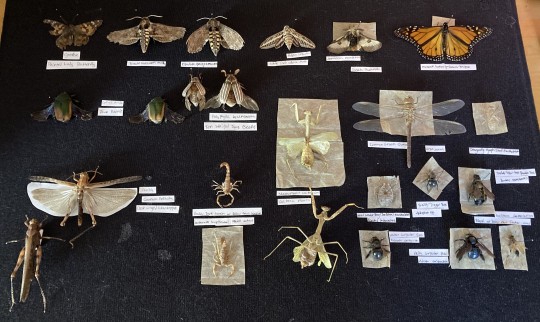
I started this when I was still super new at the hobby, so some specimens are better preserved than others, but it's nice to see my improvement with all of them together. It's also nice to see a sort of representation of all the insect life around me with them.
A lot of these are also in rough shape since I scavenge all of my specimens (usually dead or dying), or am given scavenged specimens, and very few of them were raised or captured for the purpose of pinning. I think this definitely adds to the fun of the hobby though, since each one has a pretty unique story about how it was found or acquired.
Most ID's are also still subject to change and some are still speculative, since I do all my own research for them and am definitely not perfect.



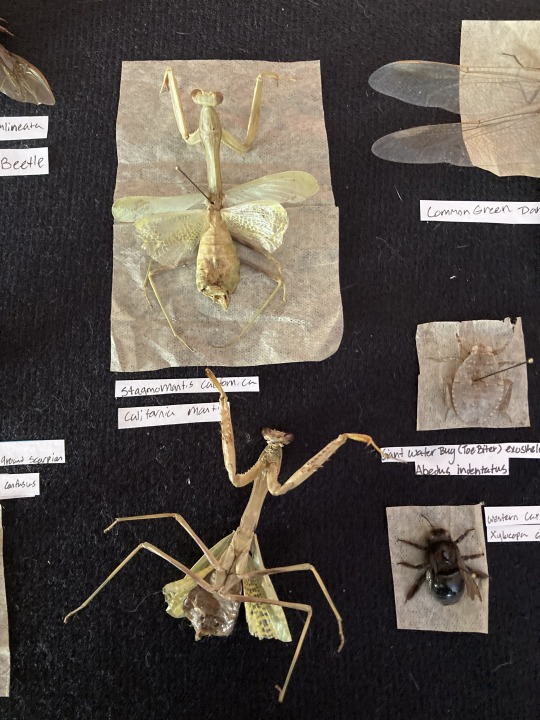
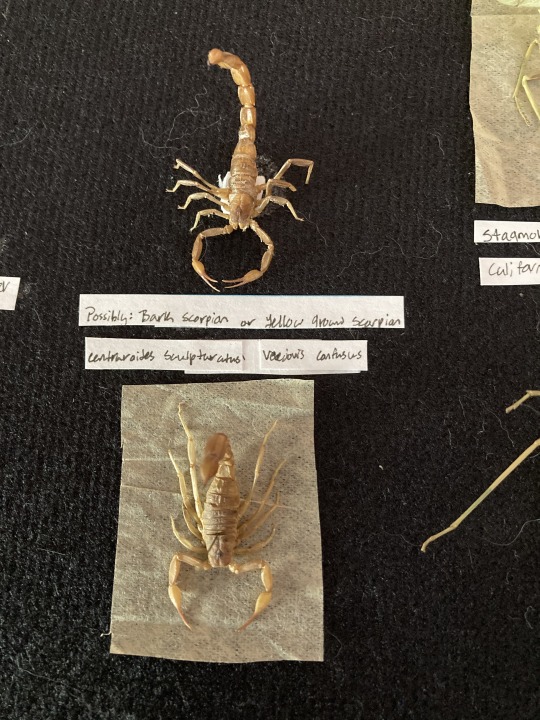

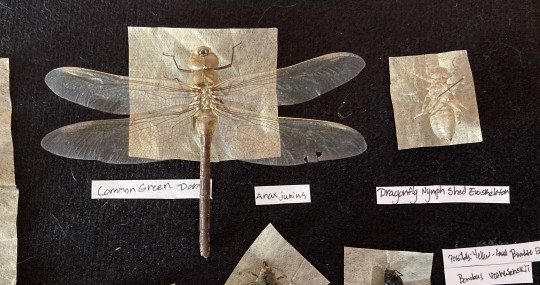
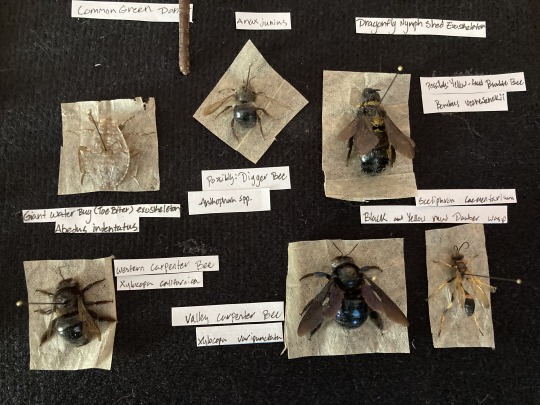
[Image ID: One wide shot image of a black board with various insects displayed on it, with small hand written labels next to, above, or below each specimen. 8 images follow as close ups of each group of specimens. The first displays a painted lady butterfly, scientific name cynthia, next to two tomato hornworm moths, scientific name Manduca quinquemaculata, with two june beetle, scientific name cotinis nitida, and ten striped june beetle, scientific name polyphylla decemlineata, underneath. The second displays a white lined sphinx moth, scientific name hyles lineata, next to a nevada buckmoth, scientific name hemileaca nevadensis, and a monarch butterfly, scientific name danaus plexippus. The third displays two clear winged grasshoppers, scientific name camnula pellucida. The fourth displays two california mantis, scientific name stagmomantis californica, one is displayed on its back, the other on its belly. The fifth and sixth display two views of two scorpions, both either yellow ground scorpions, scientific name Paravaejovis confusus, or arizona bark scorpions, scientific name centraroides sculpturatus. The seventh displays a common green darner dragonfly, scientific name anax junius, and a shed dragonfly nymph exoskeleton. The eighth displays the exoskeleton of a giant water bug, scientific name abedus indentatus, next to a digger bee, scientific name anthophora spp, with a yellow faced bumble bee, scientific name bombus vosnesenskii, next to the digger bee. Below these three specimen are two other bee specimen, a western carpenter bee, scientific name xylocopa californica, and a valley carpenter bee, scientific name xylocopa varipunctata, as well as a yellow legged mud dauber wasp, scientific name sceliphron caementarium. End ID]
#entomology#insect pinning#scorpion#butterfly#mantis#bee#moth#insect tw#drowsy draws#(the drowsy draws tag applies to all my art. even if it's not a drawing per se. so this goes here too!)
22 notes
·
View notes
Text












Sceliphron caementarium aka Yellow-legged Mud-dauber Wasp
The wasp was snooping around the pitcher plants and flew too colse to my D. binata. these pictures show the story of it escaping the D. binata.
#oddman-the-oldman#photographers on tumblr#carnivorous plants#wasps#Dorsera binata#darlinngnina#wasp
20 notes
·
View notes
Text



yellow-legged mud-dauber Sceliphron caementarium
2 notes
·
View notes
Text

Sceliphron caementarium, or the yellow-legged mud dauber. This is the type of wasp that lays its eggs on living spiders, where they hatch and eat it alive. Spiders are pretty epic and cool, so this wasp gets a 2/10, as it looks pretty cool.
Just saw it on my door and thought I’d share a picture
#insects#entomology#196#196archive#r196#r/196#rule#hungrypilled#bug#bugs#god created this creature out of hatred and malice#but it kind of looks cool
13 notes
·
View notes
Text
🐝Send in a number + Character and I'll draw them in an outfit or as a creature based on that insect🦋
Allotopus Beetle
Apollo Butterfly
Assassin Bug
Atlas Moth
Bald-Faced Hornet
Banded Darter
Banded Demoiselle
Beautiful Demoiselle
Bhutan Glory Swallowtail
Black Swallowtail Butterfly
Bullet Ant
Bumblebee
Butterfly Dragonfly
Cabbage Butterfly
Cattlehearts Swallowtail
Common Batwing
Common Bluebottle Butterfly
Common Brimstone
Common Rose Swallowtail
Conehead Mantis
Cream-Spot Tiger Moth
Creobroter
Cuckoo Wasp
Death's-Head Hawkmoth
Devil's Flower Mantis
Differential Grasshopper
Drain Fly
Eastern Tiger Swallowtail
Eighteen-Spotted Ladybird
Elephant Hawkmoth
Elephant Mosquito
Emerald Bee
Emperor Dragonfly
European Hornet
European Mantis
Eyed Ladybug
Fire Ant
Five-Spotted Hawkmoth
Fork-Horned Stag Beetle
Fourteen-Spotted Ladybird
Ghost Mantis
Giant Leopard Moth
Giant Long-Legged Katydid
Giant Malaysian Leaf Insect
Glasswing Butterfly
Goliath Beetle
Golden-Ringed Dragonfly
Great Black Wasp
Green Grasshopper
Green June Beetle
Green Snaketail
Green Stag Beetle
Halyzia Sedecimguttata (aka orange ladybird)
Hercules Beetle
Honey Bee
Housefly
Hummingbird Clearwing
Hummingbird Hawkmoth
Impatiens Hawkmoth
Jerusalem Cricket
Jewel Beetle
Lime Hawkmoth
Long-Legged Fly
Luna Moth
Monarch Butterfly
Mosaic Darner
Mud Dauber
Oleander Hawkmoth
Orchid Mantis
Painted Lady Butterfly
Paper Wasp
Peacock Butterfly
Pharaoh Ant
Picasso Bug
Pipevine Swallowtail
Poplar Hawkmoth
Queen Alexandra's Birdwing
Question Mark Butterfly
Red Admiral
Rosy Maple Moth
Ruddy Darter
Scorpion Fly
Silverfish
Small Tortoiseshell
Snakefly
Southern Hawker
Southern Flannel Moth
Spicebush Swallowtail
Spiny Leaf Insect
Sunset Moth
Tailed Jay Butterfly
Tarantula Hawk
Thorn Bug
Tiger Mosquito
Twentytwo-Spot Ladybird
Ulysses Butterfly
White-Lined Sphinx
White Witch Moth
Yellow Jacket
Zebra Swallowtail
#drawing prompt#art prompt#oc prompt#creature prompt#monster prompt#clothing prompt#bug#art challenge#insect
12 notes
·
View notes